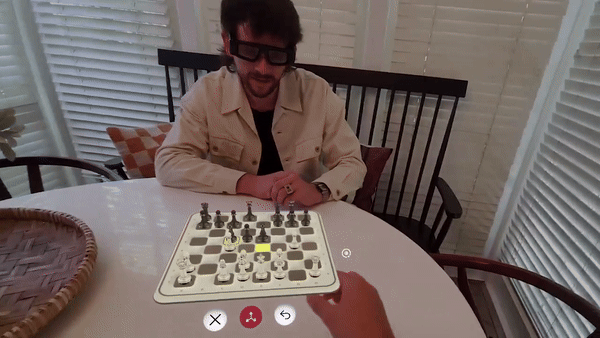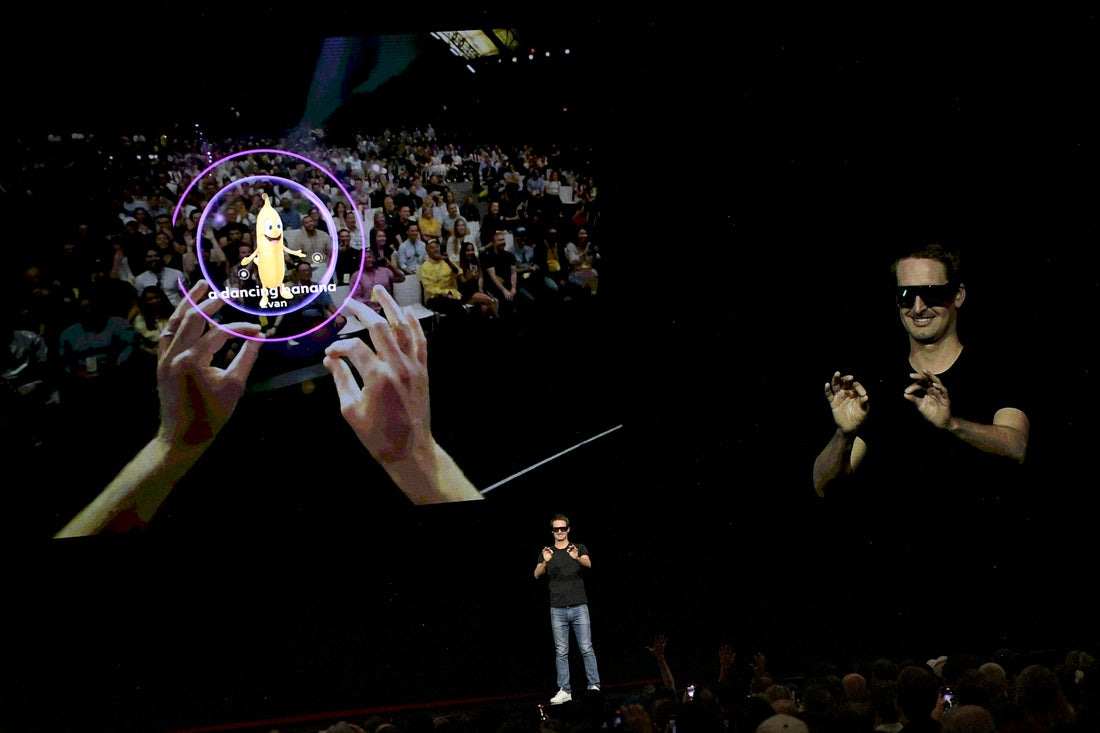Snap unveils new spectacles AR glasses for developers at $100/Month
Along with Snap OS and additional AI features
Just as rumors surface about Meta’s upcoming AR glasses, Orion, Snap has taken the lead by launching its fifth-generation Spectacles AR glasses.
At the 2024 Snap Global Partner Summit in Santa Monica, California, we joined attendees from around the world to witness the launch of Snap’s latest wearable tech.
Snap CEO Evan Spiegel introduced the product in a dramatic “One More Thing” moment, revealing not just the new glasses but also the proprietary Snap OS, marking a major step in the evolution of AR technology.
Major hardware and software upgrades
The first three generations of Spectacles, released between 2016 and 2019, were consumer-focused, designed mainly for video capture and sharing. By the fourth generation, Snap shifted towards a developer-centric AR design, though it had limited features, including a small field of view and just 30 minutes of battery life.
The fifth-generation Spectacles target developers but come with significant hardware and software improvements. Sleeker and more stylish, they feel less like a tech gadget and more like a fashionable accessory. Weighing 226 grams, they may not be lightweight, but as Spiegel noted, “It’s like fitting a powerful computer, a 100-inch screen, and a 150-pound battery into glasses that weigh just 226 grams.”
Equipped with four cameras and Snap’s spatial engine, the glasses support seamless gesture tracking, allowing users to play games, draw virtual 3D graffiti, or interact with AR objects like solar system models or boxing games—all using hand gestures.


They also support voice commands, as Spiegel demonstrated by summoning a “dancing banana” onstage at the audience’s request.
Enhanced AR experience
The field of view has expanded from 26.3 to 46 degrees, and the display resolution has improved by 25%, offering 37 pixels per degree. It’s comparable to viewing a 100-inch screen from three meters away. The glasses use waveguide lenses that reflect light from built-in micro projectors, integrating AR visuals seamlessly into the real world, powered by Snap OS.
Additionally, the glasses feature adaptive brightness, adjusting automatically to different lighting conditions to keep the display sharp, whether indoors or outdoors—even in direct sunlight.
Power and performance
With dual Qualcomm Snapdragon processors, the glasses offer up to 45 minutes of continuous use while maintaining a cool temperature. They operate independently from smartphones but can still sync with mobile devices via the Spectacles app. A spectator mode allows friends without Spectacles to join in on the AR experience through their phones.
Developer-centric focus
For now, the fifth-generation Spectacles are only available in the U.S. through a hardware-as-a-service model.
Developers and enthusiasts can apply to join the Spectacles developer program, which costs $99 per month with a one-year commitment. After the subscription ends, users must return the glasses and related materials to Snap within 30 days.
Honestly speaking, $1,200 a year just to “rent” the glasses is quite pricey. This highlights a common issue with AR tech—high costs. Like many AR glasses, Spectacles aren’t cheap, and for AR to truly go mainstream, affordability will be key.
Snap’s vision for AR
As the event wrapped up, Spiegel announced a partnership with OpenAI, quipping, “No tech event in 2024 is complete without a collaboration with OpenAI.” Spectacles developers will soon be able to leverage OpenAI’s cutting-edge multimodal AI models to enhance their AR applications’ understanding of users’ visual, verbal, and auditory inputs.
Key content partners like Lego, Niantic, and ILM Immersive have already joined the Spectacles platform. Lego’s BRICKTACULAR AR game, ILM’s Star Wars experiences, and Niantic’s Peridot AR pet game are all coming to the new glasses.
Spiegel emphasized that while VR headsets feel isolating and uncomfortable, AR glasses, seamlessly integrated into everyday wear, bring technology closer to humanity.
While the fifth-generation Spectacles aren’t perfect—especially in terms of weight, field of view, battery life, and price—they offer a glimpse into a future where AR applications are commonplace.
Snap is in it for the long game, with over 375,000 creators on its platform building more than four million AR filters. With 850 million monthly active users, Snap has the potential to foster one of the largest AR ecosystems in the world. While the Spectacles remain focused on developers for now, Snap is clearly preparing for broader consumer adoption in the future.







